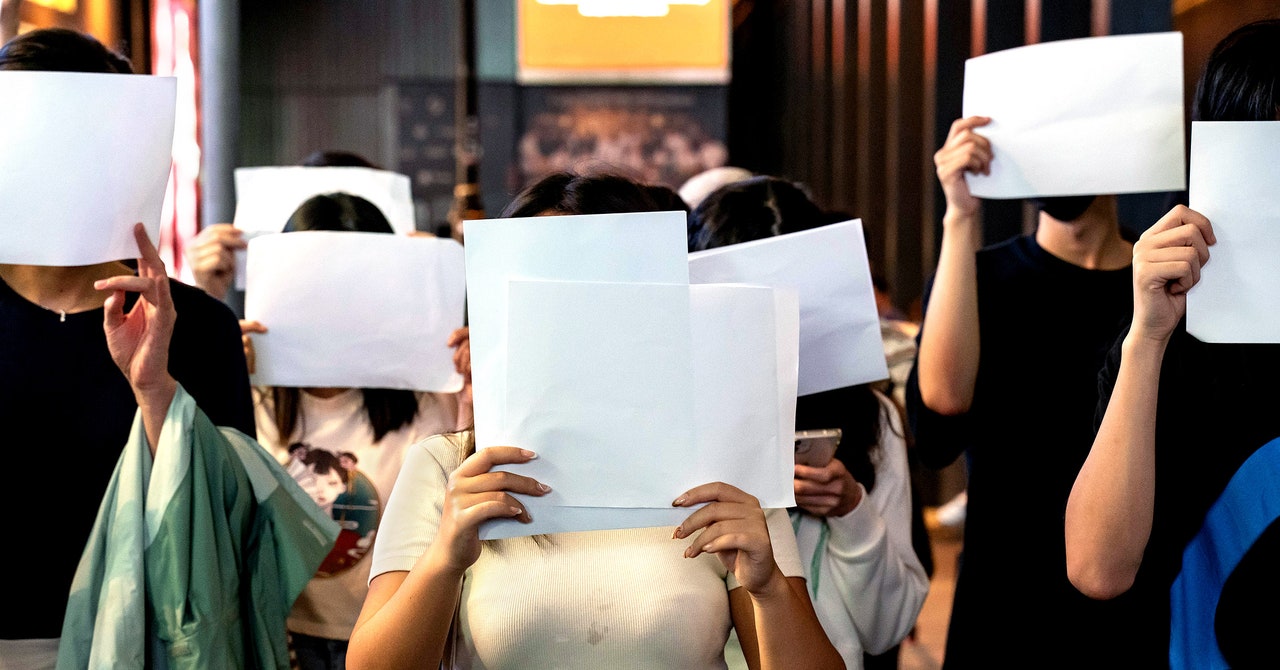The tragedy came as frustrations over the zero-Covid policy had already begun to mount. Violent clashes had broken out between workers and security at a Foxconn factory in Zhengzhou that produces iPhones. Scott Kennedy of the Center for Strategic and International Studies, a think tank in Washington, D.C., says when he visited Beijing and Shanghai in September and October, it was clear that people had become “tired” of measures like regular PCR testing. scanning QR “health codes” to go everywhere, and the constant specter of another lockdown. “I’m not surprised things have boiled over,” says Kennedy. The government indicated in early November that some restrictions would soon be eased, but the fire in Urumqi and news of Covid cases rising again, he says, “drove people over the edge”.
Like people around the world, Chinese citizens tired of the lockdowns turned to their phones to express their anger. Their familiarity with censorship and how to avoid it helped propel the protests and also helped provide inspiration for what could become their enduring symbol. Protesters held up white sheets of paper and posted white squares online, a motif many see as a partial reference to censorship. White is also the color of mourning in China, and the protests have been dubbed the “A4 Revolution”.
Protesters turned to now-familiar censorship evasion techniques, such as posting screengrabs to avoid text filters or adding filters to videos before sharing to evade automated detection systems. Protests were referred to in coded language, such as “walking.”
For Chinese netizens, using puns, memes and other tricks to evade censorship is old-fashioned, though they are more often used to grumble or speak out against the government than to encourage mass resistance. In the past week, they’ve posted screengrabs of subtitled music videos, or ironically flooded official posts with comments like “good” or “right.”
In the past three years, as the domestic internet has become more tightly regulated, people have become more adept at using VPNs and US social platforms such as Twitter and Instagram to access and distribute information, says a Chinese who is currently in Hong Kong. Chat app Telegram and Apple’s local AirDrop file sharing feature provide essential ways to spread information about protests, though Apple recently tweaked AirDrop in China so that phones are only visible to others nearby for 10 minutes at a time . Collectively, those digital tools enabled widespread awareness and coordination of the protests taking place across China. The movement showed an unusual class and ethnic unity, the Hong Kong person says, with migrant workers, ethnic minorities, feminist groups and students all taking part in demonstrations.
Towards the end of last weekend, the government’s efforts to quell the protests became apparent, both on the city streets and on the internet. The techie from Guangzhou says that on Sunday night, as he approached an area where protesters with signs were gathering, about 200 police officers were also on the scene, scattered among the crowd to prevent large groups from forming. He left, but learned later in the evening that protesters clashed with police. In the following days, he says, some of the protesters who were in the area were contacted by police, likely using location data they collected from their phones. Earlier this week, news reports reported that police were present in mainland cities where protests had taken place, and in some places they were checking people’s phones for VPNs or apps like Telegram.

